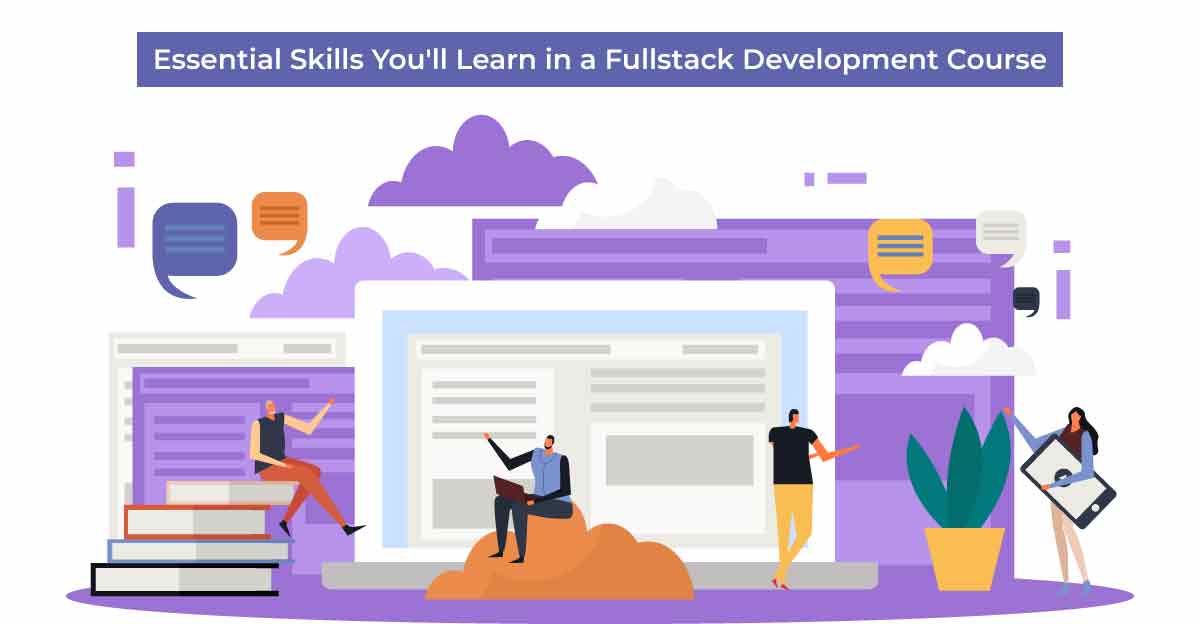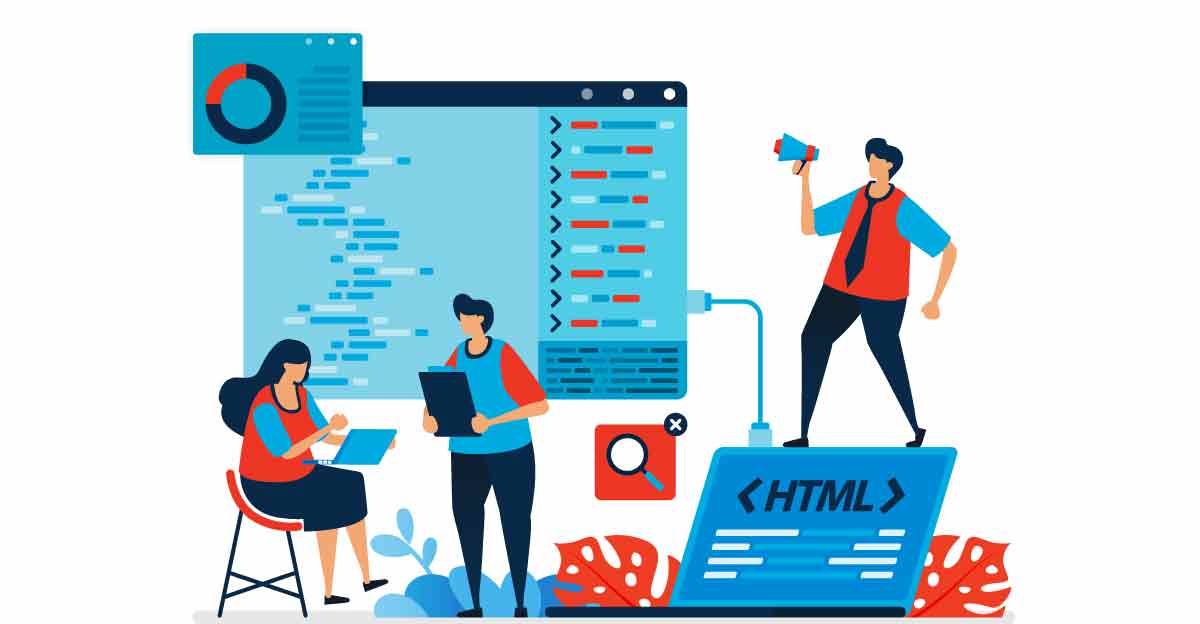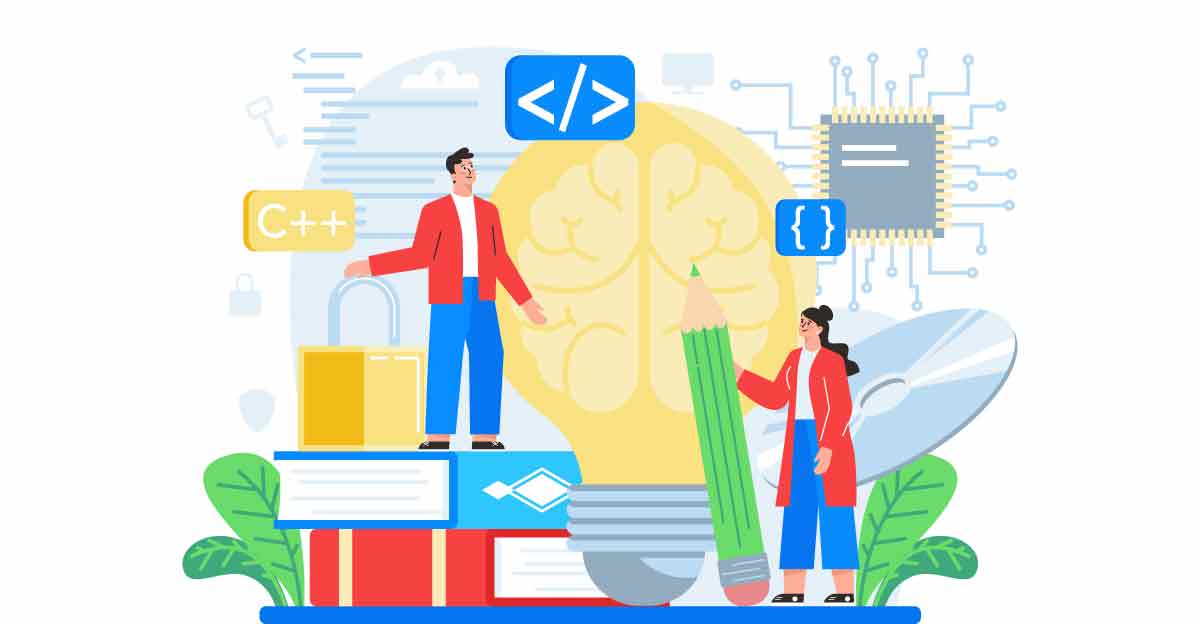Fullstack development refers to the ability to work on both the frontend and backend aspects of web applications. In today’s digital age, where businesses are increasingly reliant on web-based solutions, the demand for skilled full-stack developers is on the rise. A full-stack development course may provide you with the tools you need to succeed in this area, whether you’re an experienced developer trying to broaden your skill set or a beginner keen to learn programming.
Full Stack Developer Skills Checklist:
Essential Technical and Soft Skills for Success

Importance of Fullstack Development Skills
Being proficient in full-stack development offers numerous advantages in the tech industry. Employers seek developers who can handle both frontend and backend tasks, as it streamlines the development process and enhances overall efficiency. By mastering a diverse set of technologies, you become a versatile asset to any organization, capable of tackling various projects with ease.
Technical Skills Required for Fullstack Development:
Frontend Development: Crafting Engaging User Interfaces
The key to creating engaging online user experiences is front-end development. It entails the creation of visually appealing layouts and interactive elements that seamlessly engage users. Here is a closer examination of the main elements:
1. HTML (Hypertext Markup Language):
– HTML forms the structural foundation of web pages, defining the elements and content hierarchy.
– Mastery of semantic markup ensures clarity and accessibility, enabling search engines to index content effectively.
– Understanding HTML5 features like semantic tags (e.g., `<header>`, `<nav>`, `<main>`) enhances the structure and accessibility of web documents.
2. CSS (Cascading Style Sheets):
– CSS brings aesthetic appeal to web pages by controlling layout, colors, typography, and visual effects.
– Proficiency in CSS grid and flexbox enables developers to create responsive and grid-based layouts that adapt to various screen sizes.
– Knowledge of preprocessors like Sass or LESS enhances productivity by facilitating code organization and reuse through features like variables and mixins.
3. JavaScript:
– JavaScript is the backbone of interactivity on the web, enabling dynamic behavior and real-time updates.
– DOM manipulation skills empower developers to manipulate webpage elements, facilitating seamless user interactions.
– Proficiency in modern JavaScript frameworks/libraries like React.js, Vue.js, or Angular empowers developers to build complex single-page applications (SPAs) with ease, enhancing performance and maintainability.
Backend Development: Building Robust Server-Side Systems
Backend development involves the implementation of server-side logic and database management, ensuring the smooth operation of web applications. Here are the essential components:
1. Programming Languages:
– Proficiency in backend programming languages like Python, Java, or JavaScript (Node.js) is fundamental for implementing server-side logic.
– Each language offers unique advantages: Python boasts simplicity and readability, Java excels in scalability and performance, and Node.js enables server-side JavaScript execution for full-stack JavaScript applications.
2. Frameworks and Libraries:
– Frameworks like Django (Python), Spring Boot (Java), or Express.js (Node.js) provide a structured approach to backend development, offering features like routing, middleware support, and ORM integration.
– These frameworks streamline development, promoting code organization, scalability, and adherence to best practices.
Database Management: Structuring and Manipulating Data Effectively

The foundation of data-driven web applications is database administration, which makes it possible to store, retrieve, and manipulate data effectively. Here’s a breakdown of the key aspects:
1. Database Concepts:
– Understanding database fundamentals like relational vs. non-relational databases, data modeling, and normalization is essential for designing efficient database schemas.
– Knowledge of ACID properties (Atomicity, Consistency, Isolation, Durability) ensures data integrity and transactional consistency.
2. SQL (Structured Query Language):
– Proficiency in SQL enables developers to interact with relational databases effectively, performing tasks such as querying data, updating records, and defining database schemas.
– Advanced SQL skills include optimization techniques like indexing, query optimization, and database normalization, improving query performance and scalability.
3. Database Management Systems (DBMS):
– Familiarity with popular DBMS like MySQL, PostgreSQL, MongoDB, or SQLite is essential for selecting the right database technology based on project requirements.
– Each DBMS has unique features and use cases: MySQL and PostgreSQL are relational databases known for robustness and scalability, while MongoDB is a NoSQL database favored for its flexibility and scalability.
Soft Skills Essential for Fullstack Developers
In addition to technical skills, full-stack developers must possess strong soft skills, including problem-solving abilities, attention to detail, and effective communication skills. The ability to collaborate with team members and adapt to changing project requirements is also invaluable in a dynamic work environment.
Benefits of Enrolling in a Fullstack Development Course
Enrolling in a full-stack development course offers numerous benefits, including structured learning, hands-on experience, and access to experienced instructors. These courses provide a comprehensive curriculum that covers both frontend and backend technologies, ensuring students acquire a well-rounded skill set.
Overview of a Fullstack Development Course
A typical full-stack development course covers a wide range of topics, including HTML/CSS, JavaScript, Python, database management, and various frameworks and libraries. Students learn how to build dynamic web applications from scratch, gaining practical experience through coding exercises and projects.
Curriculum Highlights
HTML/CSS
HTML and CSS serve as the cornerstone of web development, enabling students to craft immersive user experiences. Through hands-on projects and exercises, students learn the art of semantic markup, ensuring that their code is both accessible and SEO-friendly. They delve into advanced layout techniques such as CSS grid and flexbox, empowering them to create responsive designs that adapt seamlessly across devices.
JavaScript
JavaScript breathes life into web pages, enabling dynamic interactions and real-time updates. Students embark on a journey through the Document Object Model (DOM), mastering the art of manipulating webpage elements with ease. They grasp the intricacies of event handling, empowering them to create engaging user experiences that respond intuitively to user actions. Furthermore, they delve into asynchronous programming, honing their full-stack developer skills in managing asynchronous tasks efficiently. The curriculum also familiarizes students with popular JavaScript libraries and frameworks like React.js and Vue.js, equipping them with the tools to build complex single-page applications with ease.
Python
Python emerges as a versatile backend language, enabling students to handle server-side development tasks with finesse. They gain proficiency in data manipulation techniques, harnessing the power of libraries like NumPy and Pandas for data analysis and processing. Moreover, students explore web frameworks such as Flask and Django, leveraging their robust features to build scalable and maintainable web applications. With Python, students can seamlessly integrate frontend and backend components, creating cohesive and feature-rich web experiences.
Database Management
A solid understanding of database fundamentals is indispensable for web developers. Students dive into SQL queries, mastering the art of retrieving, manipulating, and managing data efficiently. They explore a variety of database technologies, from traditional relational databases like MySQL and PostgreSQL to NoSQL databases like MongoDB. By integrating databases into their web applications, students learn to persistently store and retrieve data, laying the groundwork for dynamic and data-driven web experiences.
Frameworks and Libraries
In an ever-evolving ecosystem, leveraging frameworks and libraries is essential for streamlining development workflows and enhancing productivity. Students explore a plethora of frontend and backend tools, from CSS frameworks like Bootstrap for rapid prototyping to backend frameworks like Express.js for building robust APIs. They also delve into ORMs (Object-Relational Mappers) like SQLAlchemy, simplifying database interactions and reducing boilerplate code. By embracing these technologies, students can accelerate development cycles and focus on delivering innovative solutions.
Learning Environment and Resources
Fullstack development courses in Jaipur provide a supportive learning environment, with access to comprehensive study materials, coding exercises, and online resources. Students also benefit from interactive lectures, live coding sessions, and peer collaboration.
Hands-On Projects and Real-world Applications
Hands-on projects play a crucial role in reinforcing concepts learned in the course. Students work on real-world applications, applying their skills to solve practical problems and build portfolio-worthy projects.

Guidance and Mentorship
Experienced instructors offer guidance and mentorship throughout the course, providing personalized feedback and assistance to help students overcome challenges and achieve their learning goals.
Job Opportunities and Career Growth
Upon completing a full-stack development course, graduates are well-equipped to pursue various career opportunities, including web development, software engineering, and IT consulting. With the demand for skilled developers continuing to grow, the potential for career advancement and salary growth is promising.
Challenges Faced in Learning Fullstack Development
While learning full-stack development can be rewarding, it also comes with its challenges. Mastering multiple programming languages and technologies requires dedication, patience, and perseverance. However, with the right mindset and resources, overcoming these challenges is achievable.
Tips for Success in a Fullstack Development Course
– Stay organized and manage your time effectively to keep up with coursework and assignments.
– Practice regularly and seek help from instructors or peers when faced with difficulties.
– Create a portfolio of completed projects to highlight your qualifications to prospective employers.
– Stay updated on industry trends and emerging technologies to remain competitive in the job market.
Testimonials and Success Stories
Here are a few testimonials from past students who have benefited from a full-stack development course:
– “The fullstack development course provided me with the skills and confidence to pursue a career in web development. The hands-on projects and supportive instructors were instrumental in my learning journey.” – Sarah, Web Developer
– “I was skeptical about enrolling in a full stack development course at first, but it turned out to be one of the best decisions I’ve made. The comprehensive curriculum and practical approach helped me land my dream job as a software engineer.” – John, Software Engineer
Conclusion: Investing in Your Future as a Fullstack Developer
In conclusion, a full-stack development course offers a valuable opportunity to acquire essential skills and kickstart your career in the tech industry. Whether you’re passionate about building innovative web applications or seeking to advance your programming skills, investing in a full-stack development course can open doors to exciting career opportunities and professional growth.





